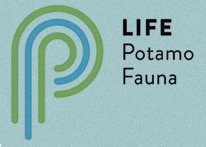The Consorci del Ter creates small wetlands in Flaçà to recover terrapins and other reptile and amphibian populations
This works are part of the LIFE Potamo Fauna project and are accompanied by the release of 150 individuals of terrapins raised in captivity until 2017
During the last winter and under the LIFE Potamo Fauna project "Conservation of river fauna of Community interest in the Natura 2000 network sites of the Ter, Fluvià and Muga river basins" 12 Mediterranean temporary ponds (3170*-Annex I habitats Directive) have been created. They have different shapes, different sizes and depths with the aim of establishing a suitable habitat for river reptiles and amphibians populations, focused on the aim of recovering the European Pond Turtle (Emys orbicularis) and improve populations of other species of amphibians and reptiles of European interest, such as the turtle Mauremys leprosa, the Marbled Newt (Triturus marmoratus), the Common Midwife Toad (Alytes obstetricans) and other toads and frogs (Pelobates cultripes, Epidalea calamita and Hyla meridionalis). The actions have been executed in the town of Flaçà within the Site of Community Importance "Banks of the Lower Ter (ES5120011)" and have been carried out from the Consorci del Ter.
Once these conditions have been created, during next this spring some pond turtle specimens will be released from a captive breeding program at the Tortoise Breeding Centre of Albera (CRT). Until 2017 a minimum of 150 individuals will be released. During last year, 70 turtles were released.
The main cause of decline and fragmentation of populations of these species is due to the disappearance of this type of habitat in Mediterranean temporary ponds, the progressive consolidation into a single channel of the river and the loose of oxbows, river natural channels and running water habitats. For this reason it is considered essential the recovery of small temporary flood zones associated with fluvial dynamics, but independent of the ordinary main channel (the low water one). The temporary ponds are semi-aquatic habitats characterized by alternating dry and wet phases.
The actions are located between the area of the island of Sobrànigues and the town of Flaçà, an area of 2.5 hectares owned by the Catalan Water Agency. During the fieldwork other areas with existing permanent reservoirs and some temporary ponds were also found, and will be also used to release pond turtles, around the zone of “Illa dels Planters” in Foixà.
The ponds have built with a natural water regime, so they are filled due to the water level and subterranean level because water contributions will not be done. Also, the proximity to the river Ter, receive the flow of natural avenues. Furthermore, no actions have been undertaken for the revegetation of the environments since the ponds riverside vegetation, both aquatic and marsh plants have a high power of colonization and recovery by themselves. Two types of ponds have been built, micro ephemeral ponds of less than 2 m2 and a depth of less than 50 centimetres, and a temporary ponds with larger depths.
During the course of the River Ter, formerly there were numerous wetland areas consisting of variable length widespread flooding in times of heavy rains, as well as ponds, temporary or permanent, often associated with old beds and oxbows of river itself. As the river has lost its fluvial natural dynamic, due to various hydraulic works carried out on his bed, especially large dams located in the middle of it, and also the result of the progressive reduction of discharges for major detraction and water consumption, these wetlands have been disappearing gradually. The river runs in one single arm and makes impossible the natural recovery of old courses and the formation of new reservoirs, as well as the renovation of the riparian forest.
For these reasons, regressive trends have been observed for many characteristic species of the river environment at all stages of Ter. The causes of this decline are manifold, from the persecution, exploitation (hunting and fishing) or combine with direct collection, including the introduction of exotic animal species, through the decline and degradation of their habitats.
LIFE Potamo Fauna has an overall budget of 1.9 million Euros, 50% funded by the European Union. Between 2014 and 2017 will work in 11 Natura 2000 areas in the province of Girona recovering and preserving various endangered species in the long term. It carries out population reinforcements, and improvements of habitats of species such as the white-footed crayfish, or more molluscs, fish, amphibians and terrapins. The project has enabled to consolidate a team of 24 people for four years.
The Consorci de l’Estany acts as a coordinating beneficiary and associated beneficiaries are Consorci del Ter, Generalitat de Catalunya throught Departament de Territori i Sostenibilitat, Forestal Catalana SA, the Amics de la Tortuga de l’Albera and the Universidad del País Vasco-Euskal Herriko Unibertsitatea. Cofinanciators are the Ajuntament de Banyoles and the Ajuntament de Porqueres, the Diputació de Girona, Aigües de Banyoles, SAU and the Consorci Esportiu de l’Estany de Banyoles.


















